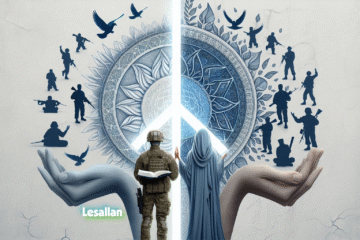Lesallan Bostron – May 1, 2023
BIB3560 Revelation (ONLSP23)
Ohio Christian University

Revelation 12 (ESV): Detailed Analysis

Initial Observations & Questions
- What does the woman in Revelation 12:1-2 (ESV) represent?
- Why?
- What does the child in Revelation 12:5 (ESV) represent?
- Who is the child in Revelation 12:5 (ESV)?
- What does the dragon in Revelation 12:3 (ESV) represent?
- What might the crown of the 12 stars on the woman’s head refer to (Revelation 12:1, ESV)?
- What do the multiple heads, horns, and diadems on the dragon’s head refer to (Revelation 12:3, ESV)?
- Who else in Revelation will rule the nations with a rod of iron (Revelation 12:5, ESV)?
- What does it mean that the child “was caught up to God and His throne?” (Revelation 12:5, ESV).
- What will happen to the woman in Revelation 12:6 (ESV)?
- What does Revelation twelve show us about the result of Satan’s long-lasting scheme to thwart God’s plans (Revelation 12:7-17, ESV)?
- What can we learn from Revelation 12:1-17 (ESV) about God’s Sovereignty?
Structure
Revelation 12 (ESV) relates to the larger context of Revelation by being part of the descriptions and visions given to John by Jesus Christ. The visions that John received revealed the events that would take place at the end of the age and the final victory of God or evil. In chapter twelve of the Book of Revelation, John saw a vision of a woman, a dragon, and a male child. The vision is symbolic and represents the continuing struggle between God and Satan. Represented by the woman is Israel, the dragon represents Satan, and the male child represents Jesus Christ. In chapter twelve of Revelation, we find the description of how Satan attempts to destroy the woman and her child but gets defeated and is thrown down to earth. So, in the larger context, the Book of Revelation shows how God’s plan for salvation is being fulfilled despite Satan’s attempts to thwart it.
Revelation chapter twelve is divided into two main sections: “The Woman, the Child, and the Dragon” (Revelation 12:1-6, ESV) and “Satan Thrown Down to Earth” (Revelation 12:7-17, ESV). These sections are structurally related in that they both describe the ongoing struggle between God and Satan. The first section describes a vision of a woman, a dragon, and a male child. The woman represents Israel, the dragon represents Satan, and the male child represents Jesus Christ. The following section (Revelation 12:7-17, ESV) describes how war arose in heaven between Michael and his angels fighting against the dragon and his angels. The dragon loses in the end and is thrown down to earth along with his angels. These two sections are connected as they show Satan’s attempts to destroy the woman and her child and the ultimate conquest of God over Satan. This chapter of Revelation fits into the larger context of the Book of Revelation by showing how God’s plan for salvation is being fulfilled – despite Satan’s attempts to thwart it.
- The Woman, the Child, and the Dragon (Revelation 12:1-6, ESV).
- Satan Thrown Down to Earth (Revelation 12:7-17, ESV).
Words & Phrases
“a woman … giving birth” (Revelation 12:1-2, ESV).
What does this imagery represent when studied?
It is symbolic and represents the nation of Israel. The woman giving birth represents Israel bringing forth the Messiah, Jesus Christ (Revelation 12:5, ESV). Overall, the imagery in Revelation 12:1-2 (ESV) is Israel bringing forth the Lord and Savior, Jesus Christ.
How is the woman described?
The woman is described as being clothed in the sun, with the moon under her feet and a crown of twelve stars on her head. This description represents Joseph’s dream in the book of Genesis, where the sun, moon, and eleven stars bowed down to Him. In that dream, the sun represented Jacob, the moon represented Joseph’s mother, Rachel, and the eleven stars were the sons of Israel who bowed down to Joseph (Genesis 37:9-10, ESV).
“a great red dragon” (Revelation 12:3, ESV).
What does this phrase “a great red dragon” (Revelation 12:3, ESV) mean or represent?
The imagery of “a great red dragon” in Revelation 12:3 (ESV) is symbolic and represents Satan. Confirmation of this is found later in the chapter where it says, “And the great dragon was thrown down, that ancient serpent, who is called the devil and Satan, the deceiver of the whole world” (Revelation 12:9, ESV).
How is the image of “a great red dragon” (Revelation 12:3, ESV) described?
The dragon is described as having seven heads and ten horns, and on his heads, seven diadems.
What does the imagery in Revelation 12:3 (ESV) represent?
Satan’s power and authority are represented, with the red color being associated with violence and bloodshed. This imagery may also represent Satan’s destructive nature. Overall, the imagery of “a great red dragon” in Revelation 12:3 (ESV) represents Satan and his power and authority.
“a third of the stars” (Revelation 12:4, ESV).
What does “a third of the stars” (Revelation 12:4, ESV) represent, and what does it mean that “His tail swept down a third of the stars of heaven and cast them to the earth” (Revelation 12:4, ESV)?
This is symbolic and represents the angels who followed Satan in his rebellion against God. The Bible sometimes uses stars to represent angels (see Job 38:7 and Revelation 1:20). What is represented by the dragon’s tailing sweeping down a third of the stars of heaven implies that Satan was able to persuade many angels to join him in his rebellion against God. Ultimately, these angels and Satan were cast down to earth and became demons.
“a male child” (Revelation 12:5, ESV).
Who and what does “a male child” (Revelation 12:5, ESV) represent when studying the imagery?
The imagery of “a male child” (Revelation 12:5, ESV) is symbolic and represents Jesus Christ. This representation is confirmed in the book of Psalm “You shall break them with a rod of iron and dash them in pieces like a potter’s vessel” (Psalm 2:9, ESV). This Psalm is often interpreted as a Messianic prophecy referring to Jesus Christ. However, the male child is also associated with the woman who represents Israel, indicating that Jesus Christ was born of the nation of Israel and fulfilled God’s promise to send a Messiah to save His people. Represented is Jesus Christ, who will ultimately rule over all nations.
“1,260 days” (Revelation 12:6, ESV).
What does the phrase “1,260 days” (Revelation 12:6, ESV) refer to?
In Revelation 12:6 (ESV), the phrase “1,260 days” refers to the period of time when the woman is nourished in the wilderness. In Revelation 12:14 (ESV), this period of time is also referred to as “a time, and times and half a time” (Revelation 12:14, ESV).
Where in the Old Testament does the phrase “a time, and times and half a time” (Revelation 12:14, ESV) also appear?
This phrase is first found in the book of Daniel, “and they shall be given into his hand for a time, times, and half a time” (Daniel 7:25 and 12:7, ESV). This phrase also refers to a period of time during which a powerful ruler will persecute God’s people. This period of time is understood to be three and a half years.
“Now the salvation … his time is short!” (Revelation 12:10-12, ESV).
What do these words “Now the salvation … his time is short!” proclaim, indicate, and describe (Revelation 12:10-12, ESV)?
These words prove that salvation, power, the kingdom of God, and the authority of Christ have come. Further indicated is that God’s plan for salvation is being fulfilled, and His Kingdom is being established. Finally, these words describe how Satan has been thrown down and defeated and how he can no longer accuse believers before God because he has been defeated by the blood of the Lamb (Jesus Christ) and the word of their testimony.
Summary, correlation, & application
The main point of Revelation 12:1-17 (ESV) is that despite Satan’s attempts to destroy the woman and her child, Satan is ultimately defeated and thrown down to earth.
This point arises from the description of the vision of the woman, the dragon, and the male child. The woman represents Israel, and the dragon represents Satan, the male child represents Jesus Christ. This chapter (Revelation 12:1-17, ESV) describes how Satan tries to destroy the woman and her child but, in the end, is defeated and thrown to the earth. This vision shows how God’s plan for salvation is being fulfilled despite Satan’s attempt to thwart it. This chapter of Revelation 12:1-17 (ESV) describes how the war arose in heaven between Michael and his angels fighting against the dragon and his angels. Ultimately, and in the end, the dragon was defeated, and there was no longer any place for them in heaven. This defeat emphasizes Satan’s loss and his ultimate downfall.
Relationships to other parts of Scripture outside the Book of Revelation can be found in many other parts of the Word. Found in Genesis 37:9-11 is imagery reminiscent of Joseph’s dream, where the sun, moon, and eleven stars bowed down to him. In that dream, the sun represented Jacob, the moon represented Joseph’s mother, Rachel, and the eleven stars were the sons of Israel who bowed down to Joseph. Psalm 2:9 says, “You shall break them with a rod of iron; you shall dash them in pieces like a potter’s vessel.” This Psalm is often interpreted as a Messianic prophecy referring to Jesus Christ. Look to passages in Isaiah 14:12-15 and Ezekiel 2:12-19 where Satan’s fall from heaven is described. Overall, Revelation 12:1-17 (ESV) relates to other parts of Scripture by drawing on imagery and themes found throughout the Bible.
When interpreted within a canonical context, this passage (Revelation 12:1-17, ESV) can have personal and corporate applications for believers. What is being described in this passage is the continuing and ongoing struggle between God and Satan, and it shows how God’s plan for salvation is being fulfilled despite Satan’s attempts to thwart it. Believers know that it is God who is in control; we can be provided assurance and comfort that God will triumph over evil. Personally, this passage is a reminder that there is a spiritual battle that never ends and that we need to put on the full armor of God to stand against the plans and schemes of the devil (Ephesians 6:10-18). This passage reminds us to remain faithful to God even in the face of opposition and persecution. To the local churches, the different denominations, or the church, it reminds us that we are all part of a more significant spiritual battle and must unite against evil forces. We should be encouraged to support and pray for our brothers and sisters in Christ who face persecution for their faith. The book of Revelation provides comfort, encouragement, and motivation for believers as we seek to live out our faith in a world that is hostile to the message of the Gospel of Jesus Christ.
Further questions
- What is the significance of the woman being clothed with the sun?
- What is the significance of the dragon having seven heads and ten horns?
- What is the significance of the child being caught up to God?
- What is the significance of Satan being thrown down to earth?
- How does this vision apply to believers today?
References:
Bauer, D. R. (2014). Inductive bible study – a comprehensive guide to the practice of Hermeneutics. Baker Publishing Group.
Bauer, & Traina. (2022). How to Study Words and Phrases. In https://lms.ohiochristian.edu/d2l/home. https://lms.ohiochristian.edu/
Beale, G. K. (1999). Revelation: a commentary on the Greek text. W.B. Eerdmans.
Beasley-Murray, G. R. (1997). “Revelation, Book of.” In Dictionary of the Later New Testament and Its Developments, edited by Ralph P. Martin and Peter H. Davids, 1025–38. Downers Grove, IL: Intervarsity.
BibleProject. (2021). How to Read the Bible: Apocalyptic Literature. Www.youtube.com. https://www.youtube.com/watch?v=UNDX4tUdj1Y
Book of Revelation – ESV – Bible Study Tools. (n.d.). Biblestudytools.com. https://www.biblestudytools.com/esv/revelation/
Book of Revelation Explained Scripture by Scripture. (2023). Bible-Studys.org. https://bible-studys.org/Discoverrevelation.com/Book%20of%20Revelation%20Explained.html
Keener, C. S. (2014). The IVP Bible background commentary: New Testament. Intervarsity Press.
Koester, C. R., & Coffman, K. P. (2023, January). Summary of Revelation. Enter the Bible. https://enterthebible.org/courses/revelation/lessons/summary-of-revelation
LaHaye, T. (2010). Revelation Unveiled. Zondervan.
Logan, C. (2019). English Standard Version – Read Online. Bible Study Tools. https://www.biblestudytools.com/esv/
Mounce, R. H. (1997). The Book of Revelation. W.B. Eerdmans.
REVELATION KJV. (1611). Www.kingjamesbibleonline.org. https://www.kingjamesbibleonline.org/Revelation
Smith, J. (2019). Revelation Summary. Biblehub.com. https://biblehub.com/summary/revelation/1.htm
The Book of Revelation. (n.d.). Www.cliffsnotes.com. https://www.cliffsnotes.com/literature/n/new-testament-of-the-bible/summary-and-analysis/the-book-of-revelation
Walton, J. H., Victor Harold Matthews, & Mark William Chavalas. (2000). The IVP Bible background commentary Old Testament. Downers Grove, Ill. Intervarsity Press.



